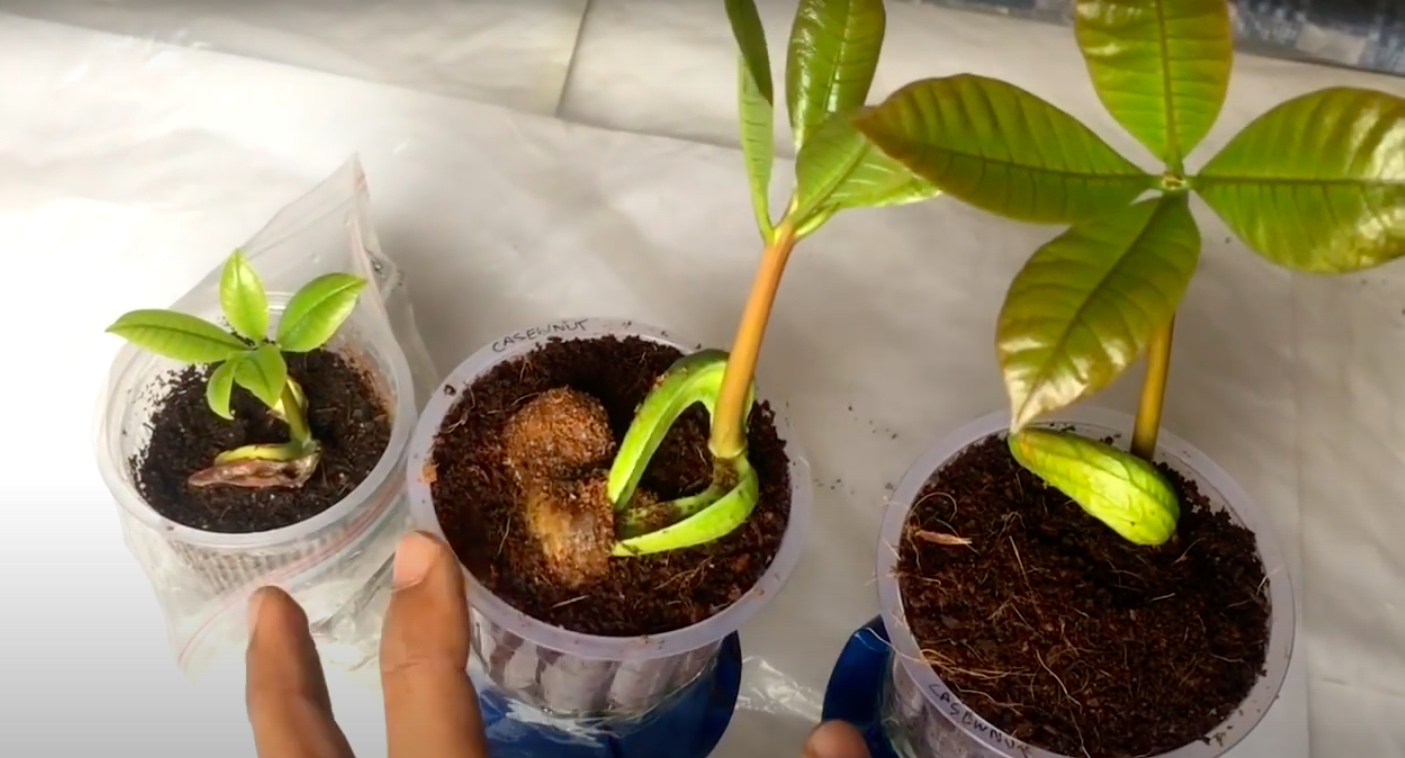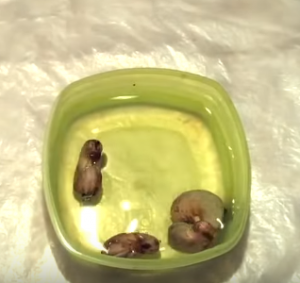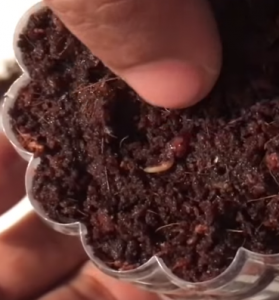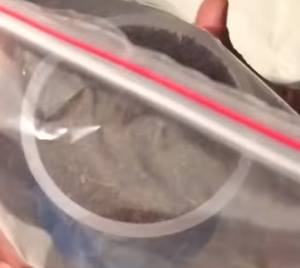How to grow cashew plant at home quick and easy way

Have you ever thought which fruit has seeds outside of fruit ? Only 2 fruits, its cashew and strawberry amazing right. There are also lots of amazing benefits of cashew check them and also learn how to grow cashew plant at home.
Introduction
Anacardium occidentale commonly known as cashew tree is an evergreen tree that produces cashew fruit. There are two parts of cashew fruit and they are cashew nuts and the cashew apple. Generally, We are only well known with cashew nuts but cashew trees also produce cashew apples. Mainly in Brazil and India, Cashew trees are cultivated for commercial purposes. Cashew trees originated from Central America and the Caribbean Islands. Cashews are also used in Indian and Pakistani cuisine for different purposes. Generally cashew plants grow with their full potential in tropical climates, where the climate is wet or dry. Cashew trees grow flowers as well as fruits during winter.

Climatic Conditions
- Blossoming of Cashew nut trees takes place between November and January.
- Cashew nut trees grow in a wide area of climatic regions between the 25 degrees N and S latitudes.
- 25 degrees Celsius is considered as the optimal temperature to grow Cashew nut trees.
- Commercial plantings of Cashew nut trees where the minimum temperature goes below 7 degrees Celsius holds high risk.
- Cashew trees can easily adapt to hot lowland areas where a little amount of water is available.
- It is found that it can easily handle temperatures above 40 degrees Celsius.


Specialties
- Cashew nut trees have large leaves and pretty, pink flowers.
- Cashew nut trees can grow up to 20 – 40 feet high.
- Cashew apple is found to be pear-shaped and a mix of red and yellow.
- Cashew nuts as well as Cashew apples are edible and are of multi-purposes.
- Raw and unsalted cashews are often used for vegan diet recipes.
Planting Techniques
- Put the cashew seeds in a small plastic container and completely soak it in with water for at least 5 hours.


- Fill plastic cups with coco peat to plant these seeds. (1 plastic cup = 1 seed).

- Then place the seeds on a paper towel to soak extra water and make sure to use tweezers to grab them because Cashew seeds release toxic oils.

- Now dig a small hole with your finger in the coco peat and bury the seeds root first. Make sure to spray some water after, to make keep seeds moist. Place them in partial sunlight areas for proper germination.

- After a week, the seeds begin to develop roots – which is a great indication that they’re growing properly.

- After two weeks, if you see root on the bottom of the cup, make sure to place whole thing in bigger pot without disturbing the roots.
- . Finally, place it inside a zip lock bag to maintain the moisture for the seeds.



- Use anti-fungal powder to remove fungus from the seeds if they get infected with fungus.


- After 20 to 25 days since the beginning, you can see the seeds start to grow plantlet and few young leaves will appear.


Soil Type
Best grows in sandy-loam soil where water can drain well.
For growth of seeds inside home Coco Peat is best. The coco peat is a bi-product of coconut-husks after they are processed to extract long fibers. It has a pH of 5.6-6.7 making it a good alternative for planting. It is eco friendly, weed and pathogens don’t have much effect on it, so much easier to maintain. Coco peat can also absorb water 8x its weight, so it can hold nutrients over a long period.
Pests and Diseases
Major disease
Anthracnose
Pestalotia leaf spot
Bacterial leaf and
Nut spot
Cashew seeds can also develop fungus, so make sure to spread some antifungal powder to keep them healthy during the growth process. The anti-fungal powder such as Baking Soda can also be used as a safe treatment to cure fungus as it is found to kill even some established forms of fungus while germinating.
Health Benefits
- It helps in the digestion of food.
- It can also help prevent vision problems.
- Cashews can improve hair growth and improve one’s skin.
- They can help in losing weight.
- Cashews are very good for the heart.
- Cashews contain a great amount of good fat.
- Studies have found that they can also help prevent cancer, which in itself is a major benefit.
Nutritional facts
The cashews contain Copper, Manganese, Zinc, Magnesium and Phosphorus which are essential elements for improving one’ health. They are highly nutritious, with high amounts of vitamin C, calcium, iron and vitamin B1. Cashews also contain minerals like copper, magnesium, zinc, iron that support immune system function.
Interesting Fun Facts
- Only one cashew is produced by one cashew apple. Just imagine how much cashew apples were used to get a fist of cashews. Thats why also they are expensive.
- Cashew tree was first cultivated during the 15th century.
- Cashew seeds produce oil which is tiny bit of acidic and allergic to some skins.
- Shell of Cashew seeds can be used to yield different derivatives like lubricants, paints, etc.
- During World War II, different arms were produced from shells of Cashew seeds.
- The leaves and bark of the Cashew nut tree can be made into a tea to treat diseases like diarrhea.
Please check the following video for growing Cashew nut tree at home:



excellent info on moringa plants, where can I purchase seeds to plant it?
The best place is amazon at your location. Try checking some agro stores around you. Let us know for more questions.
A very interesting article. I thought they were part of pilea peperomioids. These nasturtium grow like weeds where I live in southern part of South Africa. The only problems are snails. They are hardy and face drought conditions well. We don’t get frost. I love them xx
Thank you for your comment. I really appreciate it. Please be with us and help us share with your friends and family.
You are so right about choosing well drained soil for planting the grapes. It worked great when we tried.
Thank you for your comment. We appreciate it.